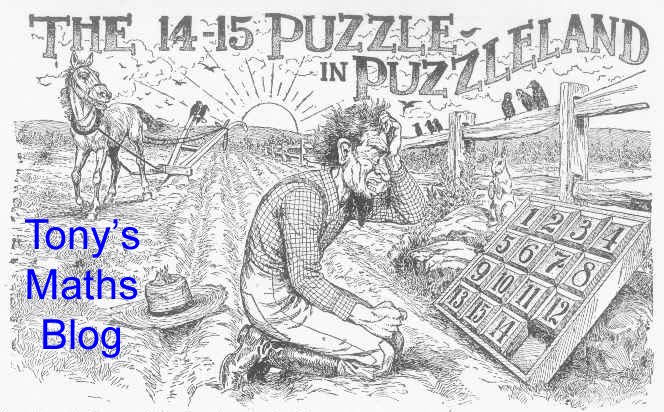*****
I have been reading William Poundstone's excellent book about the interview questions asked by Google, Microsoft and co, Are You Smart Enough to Work at Google? Amongst many others, he discusses how a candidate should answer the question "What is the most beautiful equation you have ever seen?"
For me, and I suspect a great many mathematicians, the natural answer is "Euler's formula e^i.pi+1=0" (which is much more beautiful when properly set out!) (This is the special case of Euler's more general formula for e^ix.) Why do we like this equation so much? Well, first because it is astonishing. I don't have any natural intuitive understanding of what it means to raise a number to an imaginary power, but this equation shows that doing so is amazingly powerful. This equation demonstrates the relevance of "imaginary" numbers to the real world. Who would have thought in the sixteenth century that imaginary roots of negative numbers could lead to the incredible developments in our understanding of the universe exemplified by Schrodinger's Equation, for example? (Even if I'm not sure "understanding" is the right word when one is talking about quantum theory!)
Euler's equation is remarkable because it involves five very special numbers, zero, one, i, pi and e, and it includes the fundamental mathematical operations of addition, multiplication, exponentiation as well as the notion of equality.
So is Euler's formula my favourite? Well, some of my favourites change over time. Is my favourite composer Bach, Schubert, or Monteverdi? At different times I would have answered any of these, and it depends on my mood (as well as who's performing). On the other hand, I can't imagine ever changing my favourite football team, however depressing their results (and I fear that the Pars' sensational 6-1 win yesterday in the relegation / promotion play-off semifinal has just set us up for greater disappointment in the final). I feel that Euler's as favourite equation is probably more permanent than Schubert but may be less lifelong than my love for the Pars.
But apparently Euler's is not the right answer for Google - it's not original enough. (Understandably.) So i wanted to be provocative I'd have to give another favourite equation. And I think I might put forward John McKay's equation. Here is the equation, written by McKay himself in my visitor's book.
So what is this about? The equation 196884 = 196883+1 is certainly plausible, but why is it any more interesting than any other trivial arithmetic sum?
Well, McKay works on sporadic simple groups, the existence of the largest of which, the Monster, was conjectured in 1972 and confirmed in 1980. The smallest non-trivial irreducible representation of the Monster has degree 196883. McKay's wife works in the area of modular forms (a quite different area of mathematics) and McKay happened to see that she had written down an equation which included the coefficient 196884.
McKay thought the similarity of the two numbers could not be coincidental. It turns out that the other coefficients in the elliptic modular function also relate to the representations of the Monster. McKay's observation has led to the discovery of very deep (and very obscure) connections between apparently totally different branches of mathematics. This whole area has been given the evocative name "Monstrous Moonshine". It's much too difficult for me, but I believe considerable progress is being made, although at the time he wrote his formula in my visitor's book, McKay told me that he thought it likely the matter will never be fully understood - there being little likelihood of anyone ever having deep enough knowledge of both of these two subjects to be able to investigate the connection.
So McKay's formula may not be as immediately beautiful as Euler's, but it has something of the same spirit (and perhaps even importance). It demonstrates a very deep connection between group theory and modular forms; it's mysterious and hard to understand, and it's inspiring important mathematics. And it says a lot about the serendipity which lies behind insights even in a subject as apparently logical and rigorous as mathematics. If I can't use Euler's equation then when Google ask me this question I'll go for McKay.

